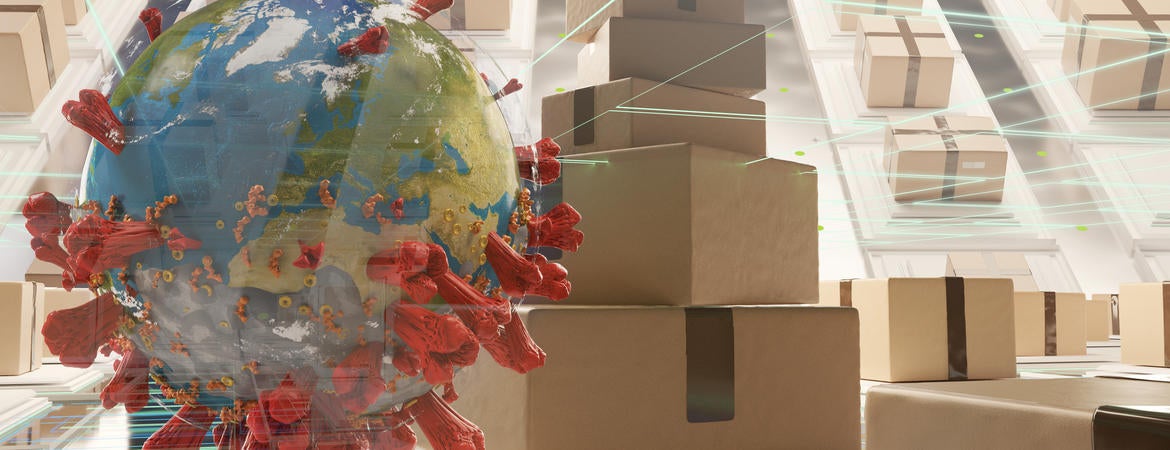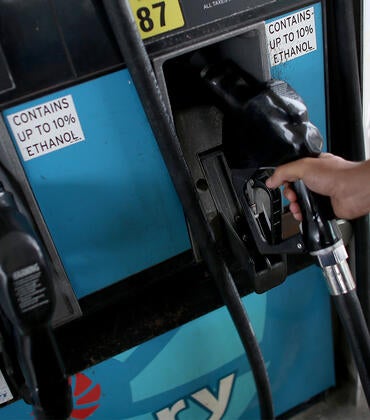
One of the most visible impacts of the coronavirus pandemic has been the strain on the global supply chain, with consumers noticing certain goods are harder to find at their local store.
Danko Turcic, an associate professor of operations and supply chain management at UC Riverside’s School of Business, said the current environment is causing “previously unseen disruptions in both supply and demand.”
In order to understand why, it’s helpful to know how supply chains work. Turcic describes a supply chain as a logistics network made up of suppliers, manufacturers, warehouses, distribution centers, and retail outlets.
In a standard supply chain, raw materials are sent to factories where goods are manufactured. Those products are then shipped to warehouses for storage and then to retailers or customers. For consumers, the system is designed to provide more variety and lower costs, Turcic said.
So far, the supply chain in which Americans get most of their goods is holding up well, he said, with consumers able to get most products. But will it last? Below, Turcic explains his thoughts in more detail.
How durable is this system, how long a period of time can it continue to operate without a major disruption?
It is impossible to answer this question generally. Supply chain resilience depends both on the product and on the retailer that engineered that particular chain. Supply chains are resilient if the retailer has relationships with multiple suppliers for the same product or when the retailer holds large safety stocks. Having either gives the retailer the ability to respond to both supply and demand shocks. The problem is having a lot of suppliers or large safety stocks is more expensive than having fewer suppliers and smaller safety stocks. So, it comes down to pricing and to striking some kind of balance. How much are consumers willing to pay?
What particular impacts are we seeing now due to the coronavirus?
First and foremost, we are seeing dramatic shifts in demand for certain items, which lead to the following:
1. Shortages, e.g., lack of hand sanitizer and paper products, which comes down to manufacturing constraints.
2. Rationing, e.g., many retailers respond to shortages by rationing certain items.
3. Prioritization, e.g., online retailers prioritize supplies and deliveries of certain items (household and medical).
4. Reduction in the number of SKUs (stock keeping units) that many retailers offer. To make their supply chains more manageable, many retailers have been reducing product variety. Doing so allowed both to focus and to make more storage space for items that are currently in high demand. Fundamentally, managing supply chains during the crisis is not business as usual.
Why are we seeing shortages of certain products like toilet paper?
A well-designed supply chain is built to withstand some supply uncertainty and some demand fluctuations. But the demand fluctuations for items like toilet paper, hand sanitizer, hair clippers, and other household items are well outside of the normal fluctuation ranges.
The manufacturing base simply isn’t set up for it, nor should it be, because in a regular time, it doesn’t make sense to have such overproduction of these particular items.
Moreover, supermarkets and food supply chains were not designed for resiliency. They were designed for maximum business cost savings.
Conversely, why are some farmers having to destroy certain crops?
In part, that is because they can’t easily shift products bound for restaurants into the appropriate sizes, packages and labels necessary for sale at supermarkets. Few in the agricultural industry expect grocery store demand to offset the restaurant market’s steep decline.
A farmer who is used to supplying five local restaurants that are shut down cannot easily switch production to supplying to the local supermarket, where there is a lengthy process where they vet you before they allow you into the store.
Are there some long-term impacts we should be concerned with?
One of the big challenges is to keep the workforce healthy. If you cannot relieve people in their situation, where they have to physically work in close proximity and the disease starts spreading, you might have people not showing up for work or actually physically falling ill. If that happens, particularly for companies that are harvesting crops, where the work is very labor intensive, and they have a hard time doing it in any other way, then this is a serious constraint for them.
Going forward you will see some differences between different companies. Some retailers will have shortages of different items, possibly because they planned differently from their competition. Planning for supply chains that can function well in this environment is very expensive. In terms of supply chain, what we’re experiencing now is like a 100-year-old flood.




